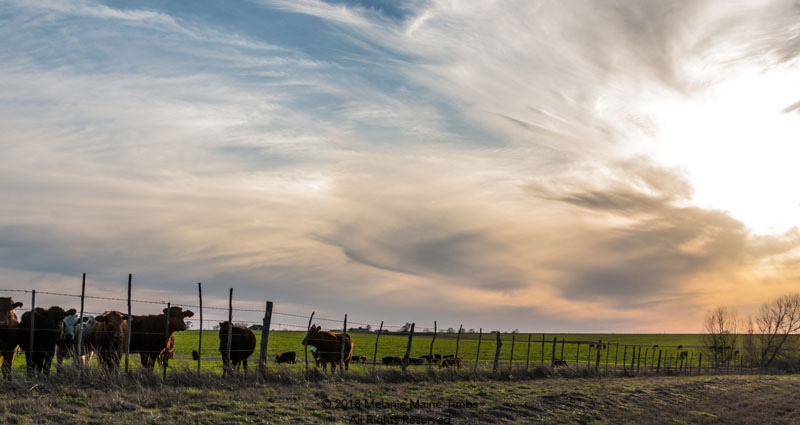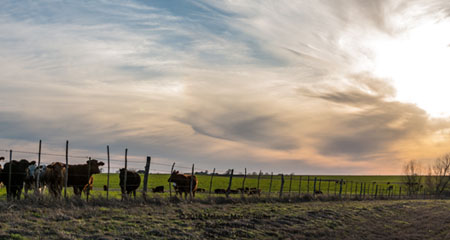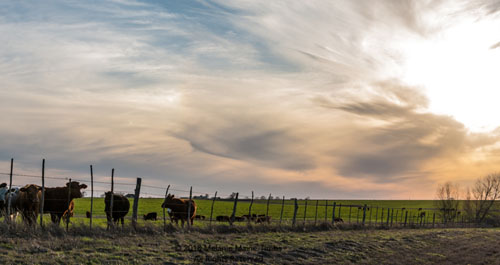Climates in Texas
The National Climatic Data Center has identified 10 distinct climate divisions in Texas based on characteristics like temperature, humidity and rainfall data. Those divisions are:
- Division 1 – High Plains: Continental steppe or semi-arid savanna in Northwest Texas. Summer highs are in the low 90s, and winter lows are in the low 20s. Includes Amarillo and Lubbock.
- Division 2 – Low Rolling Plains: Sub-tropical steppe or semi-arid savanna near Texas' northern central border. Summer highs are in the high 90s, and winter lows are in the low 30s. Includes Wichita Falls and Abilene.
- Division 3 – Cross Timbers: Sub-tropical, sub-humid, mixed savanna and woodlands in north central Texas. Summer highs are in the high 90s, and winter lows are in the mid-30s. Includes Dallas and Fort Worth.
- Division 4 – Piney Woods: Sub-tropical, humid and mixed evergreen-deciduous forestland in northeastern Texas. Summer highs are in the mid-90s, and winter lows are in the mid-30s. Includes College Station.
- Division 5 – Trans-Pecos: Subtropical arid desert in West Texas, except for the slightly wetter high desert mountainous areas. Summer highs are in the high 90s, and winter lows are in the low 30s, with cooler temperatures in the more mountainous areas. Includes El Paso.
- Division 6 – Edwards Plateau: Sub-tropical steppe or semi-arid brushland and savanna in the central and western parts of the state. Summer highs are in the mid-90s, and winter lows are in the low 30s. This largely rural district includes San Angelo.
- Division 7 – Post Oak Savanna: Sub-tropical, subhumid, mixed prairie, savanna and woodlands in southeast Texas. Summer highs are in the mid-90s, and winter lows are in the low 40s. This includes Austin, San Antonio, and Corpus Christi.
- Division 8 – Gulf Coastal Plains: Sub-tropical, humid, marine prairies and marshes along the southeast Texas coast. Summer highs are in the high 90s, and winter lows are in the mid-40s. Includes Houston and Beaumont.
- Division 9 – South Texas Plains: Sub-tropical steppe or semi-arid brushland in south Texas. Summer highs are in the low 100s, and winter lows are in the mid-40s. Includes Laredo.
- Division 10 – Lower Rio Grande Valley: Sub-tropical, sub-humid, marine area in the southern tip of Texas. Summer highs are in the low 90s, and winter lows are in the low 50s. Includes Brownsville.
Severe weather in Texas
Winter:
Texas is a southern state, but don't let that fool you into under-preparing for cold weather. Roughly the whole northern half of the state experiences temperatures near or below freezing at some point in the winter, and snow and ice storms are possible wherever temperatures drop that low. If you're moving to the panhandle region, keeping a snow shovel and some sidewalk salt in the garage wouldn't be a bad idea.
Summertime high temperatures and sunshine can be unrelenting throughout the state, compounded by high humidity in the southeast. During the hottest months, it's important to limit outdoor activities and wear sunscreen.
Storms:
Severe storms in Texas are just as diverse. Thunderstorms are possible across the state, and the Gulf Coast is battered almost annually by tropical storms and hurricanes. Texas is also one of the most active states for tornadoes. The busiest months for tornadoes are April, May and June, and they occur throughout the state, though less often in west and southwest Texas.
Dust storms are another severe weather event that may be unfamiliar to Texas newcomers. Dust storms are most common from west Texas to the panhandle region and pose extreme dangers to driving visibility and to people with respiratory conditions.
To be ready for these severe weather situations, it's a good idea to sign up for a weather app that offers severe weather alerts.
Staying comfortable year-round
Most of the state sees hot summer highs, yet even the sticky swampland of southeast Texas gets chilly on winter nights. Unless you live near the southernmost tip of the state, you should expect to need both air conditioning and heat to get through the year.
How much you'll spend on each varies significantly from region to region, so it's helpful to look into local weather data for your Texas destination to see how temperatures vary throughout the year.
The best way to prepare your new home for energy-efficient heating and cooling depends on the region. For recommended insulation levels, for example, central Texas is in a different category from southeast Texas and much of the panhandle. In West Texas, the arid climate can make it a good idea to protect your home and health with a whole-home humidifier, whereas dehumidifiers are more common in the southeast.
Expect higher energy bills in the summer
Even in the warmer regions of Texas, what passes for a mild summer can still put a significant months-long strain on your air conditioner. The warmest months will likely be where you spend the most on electricity. Higher temperatures mean everyone in the state uses more energy to keep cool, which stresses the massive generators that create electricity. The increased energy load leads to more generators operating at peak capacity and higher maintenance and costs. Not only are you consuming more electricity in the summer, but you may be paying more per kilowatt-hour.
There are lots of ways you can fight back against this seasonal surge. Check out Direct Energy's summer energy-saving tips and see how you can save more without sacrificing comfort or convenience.
Wherever your travels take you in Texas, a different climate is just a couple hundred miles away. Getting to know your new climate district and what it means for your local weather and year-round comfort is key to enjoying your time in Texas.





























